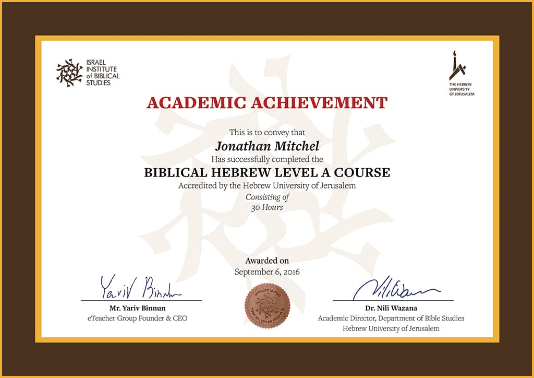Course Description
Now that you have mastered the foundations of Biblical Hebrew and expanded your vocabulary, we will introduce you to more complex grammar and teach you to use the Hebrew lexicon. Once you have acquired these tools, you will be able to interpret a wide range of Biblical texts.
In this intermediate course, we explore the Book of Samuel, which gives us the opportunity to read fascinating stories about the power struggle for the throne of Israel and David’s succession. Through these stories we will encounter new forms of speech, unique verb conjugations and extensive vocabulary.
When do our courses start?
We have a few starting dates so you can choose the class that best suits your schedule. Our next class starts on Tuesday, August 05 at 4:05 PM. If you are interested in one of our classes click on the schedule below to start the registration process.



























 Available on WhatsApp
Available on WhatsApp